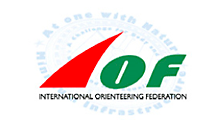 Next week during the World Orienteering Championships (WOC) in Scotland a decision will be taken about the future of the WOC: IOF is calling an Extraordinary General Assembly in order to discuss a proposal for splitting today’s WOC into a forest part and an urban part.
Next week during the World Orienteering Championships (WOC) in Scotland a decision will be taken about the future of the WOC: IOF is calling an Extraordinary General Assembly in order to discuss a proposal for splitting today’s WOC into a forest part and an urban part.
In July 2015 Matthias Niggli, Janne Salmi, Simone Niggli and several other coaches, elite athletes, former elite athletes and other important orienteering personalities have written an open letter to the IOF Council and National Federations where they are opposed to the suggestion of splitting the WOC – and where they name a number of risks by splitting the WOC. Although there are many good arguments in the letter, it is not written in an objective way – highlighting disadvantages with a split WOC without discussing the advantages.
This article discusses the advantages and disadvantages with splitting the WOC in a more objective way. There are, however, many issues here which are difficult to fully answer. Please add a comment if you think the arguments are not well balances, and the article will be changed if possible.
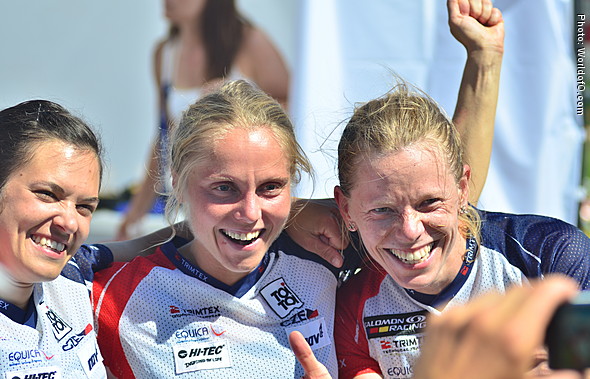
Overall discussion & Main questions
A lot of background material and detailed discussions of different issues is included below for the interested reader. The main questions are discussed here for the ones who don’t have time to read the complete document.
- How much less complexity and how much lower cost is it to organize separate urban/forest WOCs compared to a today’s model? Will it give better locations for each championships? Will this give more applications for WOC and more organizing countries? Higher event quality?
Discussion: Yes it is easier and cheaper to organize a separate urban or forest WOC than a complete WOC. Just reducing the number of days from 8-9 to 5, the number of disciplines with TV production from 5 to 3 (TV is a cost driver; the number of days is a significant part of the budget, even rest days cost money) and so on. But many costs are “base costs” not influenced by the number of competitions/competition days. Complexity is lower for a split WOC, but not very significantly lower.
Conclusion: (1) Just to put up a number: 15-30% less complexity, 25-40% less cost for a single split WOC (either urban or forest) compared to a full WOC. Does anybody have better numbers? (2) Yes, there should be some more applications for a split WOC, it is less complex to organize and there are more places which are suitable – even in a country like Norway there would be more opportunities. But it may turn out – over time – that it is difficult to find organizers for either the urban or forest part due to financing issues. Also, this is a question about the overall competition program (see further below) - How much lower is the cost for teams for participation and preparations for a separat urban/forest WOC compared to today’s model?
Discussion: Reducing the number of days from 8-9 to 5 leads to a significant cut in budget for the teams. Also, preparations for urban races typically require less travel to the host country for preparations.
Conclusion: Again, just to put up a number: 20-25% cost reduction for participation and 15-25% cost reduction for preparation for a split WOC. Does anybody have better numbers? - Will there be more or less of the big profiles on the start in each discipline in a split WOC model than in today’s model? And will some even skip a complete WOC (either forest or urban)?
Discussion: This question is difficult to answer, it can go both ways as more of the potential winners in each discipline will probably start in a split WOC, but the risk of top profiles not being present at WOC at all (for one of the split WOCs) is definitely an issue which is more problematic than today’s situation. Thus there is a real risk of losing some of the top profiles at WOC in a split WOC model.
Conclusion: Split WOC gives bigger downside than today’s model. - How will a split WOC model work towards media? Is it an advantage because WOC can potentially be organized outside the “low key” European summer months, or is it a problem because WOC is different from year to year and it is difficult to understand for media? And is a shorter WOC a problem for media?
Discussion: This is again a difficult question to answer. WOC in the summer months is definitely an issue with respect to media interest (pointed out by media representatives in numerous discussions). The potential problem with a different WOC from year to year or profiles not being present is more difficult to assess – but it will surely be a disadvantage. It has been discussed with several media representatives – the issue with missing profile being pointed to as the main issue.
Conclusion: Split WOC gives potential issues, these are probably more problematic than the advantage of potentially avoiding the summer months. - Will a split WOC lead to either urban or forest WOC getting a “B”-status over time? And even dying?
Discussion: This question has been raised in many discussions. Some I have discussed with fear that the urban disciplines will win because all non-Scandinavian nations will focus on sprint and the urban part of the sport will spread. Others fear that the forest disciplines will win and sprint will die – because the nations with most money focus most on the forest disciplines. These arguments show that both parts have their strengths – and that this problem may be an advantage in that each part may develop better in a separate championship.
Conclusion: No clear conclusion. - Hove does a split WOC work for the “smaller” orienteering nations?
Discussion: The removal of the qualification has been a significant problem for the “smaller” nations who have only 1 (or maybe 2) athletes in middle/long. Many athletes have lost the motivation to focus on the forest disciplines as the chances to run in the forest are small. In a split WOC model there would need to be some sort of qualification reintroduced (there is no other realistic possibility – if not you would not get enough nations participating with most runners only running the relay), which would be good for the “smaller” nations. Note however that you could also include a qualification again in today’s WOC program (e.g. a “low key” type before the actual championships). Lower cost for participating and easier preparation would also be an potential advantage. - How does a split WOC fit into the overall Competition program? Will there also be a split EOC? What about the World Cup?
Discussion: This is probably the most important question in all of the discussion. Depending on how you form the rest of the competition program, the cost savings above may disappear – and overall cost for federations may even be higher than today with a split WOC model. Also, the number of high-quality organizers required may increase rather than decrease, and media questions may also be turned around. For example, if you also split the EOC and organize urban and forest EOC in opposite cycle with WOC, you get one urban championship (WOC or EOC) and one forest championship (EOC or WOC) each year. For this you need high quality organizers – and the team need to pay both travel cost and preparations. Instead of 3 championships every 2 years (2 WOC + 1 EOC) as today, you would have 4 championships every 2 years (2 WOCs and 2 EOCs). Nevertheless, a split EOC is what may very well become the solution. A complete EOC every second year is probably easier to accommodate – or should one skip the EOC completely and focus on the World Cup?
Conclusion: The overall competition program needs to be an integral part of the discussion of a split WOC. - Would it be better to have WOC every second year instead of splitting WOC into two (in order to get enough organizers and ensure quality)?
Discussion: This would probably be a solution to the organizer problem (at least partly), you would only need half the number of organizers. However, each time this is introduced in discussions, the media aspect comes up. It is said that one needs a WOC every year to attract the media. The answer to this is probably that yes, if we don’t have a strong World Cup or European Championship, we need WOC every year. But this is again a question of overall competition program. E.g. Cross Country Skiing works very well with World Champs only every second year, but they have a strong World Cup, and the Olympics.
Conclusion: The overall competition program needs to be an integral part of the discussion of a split WOC. WOC every second year may work, but it would not work well with today’s competition program.
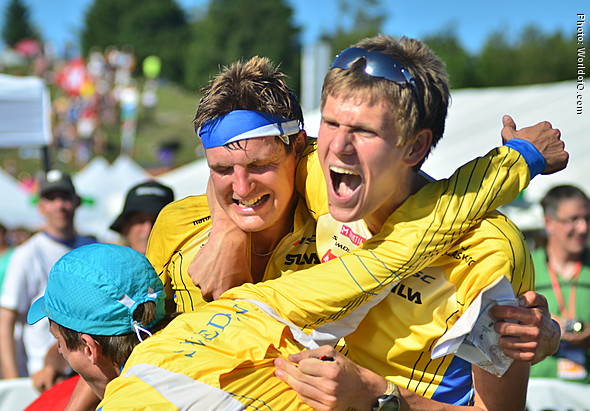
Overall conclusion
The overall conclusion depends on how you weight the various issues. It is, however, quite clear that the overall competition program is an important part of this decision. There are significant potential advantages with a split WOC model, but they may be “eaten up” by a non-optimal overall competition program.
Also, the fundamental problem with WOC today is that the overall organizing costs (including IOF sanction fee, cost for TV production and all other costs) are so high that it is very difficuelt to earn money on organizing WOC (WMOC is part of a “sweetening package” the next years). Are there other more fundamental issues which are more important to sort out than to decide if the WOC is split or not? There is a clear expectation of (live) TV from all WOC disciplines – but with limited sponsors the cost for it is so high that it is not easily sustainable. Does a split WOC solve any of the real issues at hand? A split WOC may solve it better than today’s model, but is the step too small compared to the step necessary to be sustainable?
What do you think? Split WOC or Not? And why?
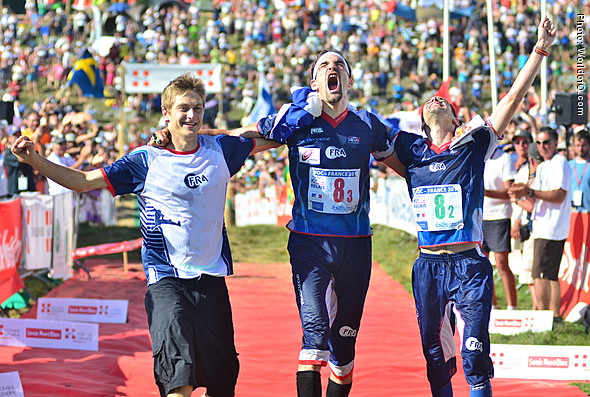
Pros and Cons Table & Discussion
In the following table some advantages and disadvantages with a split WOC model are set up in a Pros/Cons table. This is not a full discussion of all points, but some of the points from the questions above are further elaborate. Some of these points are also discussed further below.
| Pros/Cons: Split WOC model | Pros/Cons: Today’s WOC model |
| Some of the biggest profiles in orienteering may skip the complete WOC (forest or urban) due to specialization.Probability: High (but only pure experts, most would try to run the other WOC, e.g. Gueorgiou would probably run urban?)Consequence: Profiles not present, lowers interest of media. Consequence is more problematic than athletes skipping disciplines in today’s WOC model. | All the big profiles in orienteering are present at every WOC. |
| In each discipline, the best athletes in this discipline can be on the start. | Some of the best athletes in a discipline skip the discipline due to too tough program. Probability: High (happens today in all disciplines)Consequence: Profiles not present, lowers interest of media, value of gold |
| Potentially easier to organize a sprint WOC in many locations. Potentially easier to find future WOC organizers because more areas (e.g. big cities or areas without proper urban terrain) are possible venues for a World Orienteering Championships, the event is shorter and thus requires less man hours to organize.See separate discussion below. | Difficult to organize a complete WOC in many locations which would be very suitable for either forest or urban.Difficult to find WOC organizers for full WOC weeks – limited number of applications today.Probability: Medium to High (no applications for WOC 2019). However, there is no guarantee that the situation would be better for a split WOC.Consequence: IOF can not demand base service quality with this level of interest, this potentially reduces event quality for WOC.See separate discussion below. |
| Lower cost for organizers for split WOC as 5 days opposed to 7/8 days.See separate discussion below. | Full WOC of 7/8 days is more costly to organize.Probability: Already a problem today.Consequence: More difficult to get organizers, potentially lower event quality.Discussion: TV is the main cost driver, not the number of competition days. Cutting TV demands would be an alternative way of cutting. See separate discussion below. |
| Lower cost for teams for split WOC, both at the WOC and for preparations. Higher chance for athletes with less budget to be well prepared. | Higher cost for teams with a complete WOC, both during WOC and for preparations.Consequence: Potential reduction of participation. Nations with high budget are significantly better prepared. Especially forest WOC is expensive for preparations – and takes a lot of resources from national teams. |
| Potentially easier to find future WOC organizers as complexity of organization is lower with less diversity in competitions and shorter total duration of WOC. Discussion: Note however that it is still expensive and complex to organize a WOC. Most parts of WOC are common for urban/forest. Complexity is maybe reduced by 20% for a split WOC, not by 50%. Urban WOC is not necessarily easier to organize than forest WOC. | A full WOC is very complex to organize with different competition types over many days. You need both skills for forest WOC and urban WOC. |
| More challenging for an organizer of a pure forest WOC to get financing from the state/region if no races are organized in cities. | Races organized in cities, i.e. potential for funding from state/region |
| Generally more challenging to get the same income through spectator races with a shorter WOC. Specifically more challenging for an organizer of a pure urban WOC to get financing through spectator racesDiscussion: But terrain in nearby forest areas may be used in some cases. There are also other items which can attract orienteering spectators in a bit city. | Forest races, i.e. potential for large spectator races. |
| More suitable terrain for the championships – both forest and urban – as you don’t have to do compromises with respect to having both forest and urban terrains available | Compromises with regards to terrain or long travel times as both forest and urban terrain of high quality required for each WOC |
| Potentially easier to find WOC organizers outside Europe because easier to organize and more suitable places available | Difficult to get organizers outside of Europe. |
| Potentially participants from more nations in urban WOC over time(?) | Athletes from all nations in both forest and urban WOC; maybe not exploiting full potential of urban part with respect to participation? |
| Potentially participants from less nations in forest WOC (and possible also urban WOC?) | Athletes from all nations in both forest and urban WOC; no reduction due to nations prioritizing urban only or forest only |
| If the IOF sanction fee is kept constant, the high sanction fee may be a challenge for a “smaller” split WOC with less income potential. | IOF sanction fee issue as today. |
| Possibility for WOC outside main European summer months for years with urban WOC – possibly also for forest WOC. This is a big advantage with respect to TV/media interest.Discussion: From a media view point, a WOC in autumn (September – October) or spring (May) would probably be better than July – August (this must be confirmed by a media group, but indications have been given when talking to media/TV responsible). For an urban WOC a late autumn or spring WOC might be feasible (spectator races less important, possible with weekend urban spectator races which can be held either sprint or autumn). | WOC usually in summer months due to organizers’ need for multi-day spectator races and many organizers in a long event. |
| Possibility to introduce first-to-finish discipline on the WOC program | No room for individual first-to-finish disciplines on the WOC program (this must not necessarily be negative). |
| Possibility to re-introduce qualification in forest WOC | No qualification races forest WOC; potential issue for “smaller nations” |
Discussion: Participation of the best athletes in all disciplines
In today’s WOC some of the best athletes do not participate in all WOC disciplines because the program is too tough, even with the qualification races removed. Several athletes skipped either the long distance, the sprint or the sprint relay in order to be fresh for the other races in 2014 – we see a similar situation in Scotland in 2015. This would probably be avoided in a split WOC model. On the other hand a split WOC might lead to WOCs where some of the biggest profiles of orienteering are not participating. E.g. the best pure sprinters would not participate in a forest WOC and the best forest specialists would not participate in an urban WOC. The latter could potentially be reduced by introducing a longer urban discipline in the urban WOC.
Discussion: Easier to find future WOC organizers
A split WOC model makes it potentially easier to find future WOC organizers because more areas are possible venues for a World Orienteering Championships for either urban only or forest only. An example are large cities which are good possible venues for an urban WOC. It is also possible to get more suitable terrain for the championships as you don’t have to do compromises with respect to having both forest and urban terrains available close to each other. It is also potentially easier to find future WOC organizers for a split WOC as complexity of organization is lower with less diversity in competitions (urban only or terrain only) and shorter total duration. Note however that it is not easy to organize urban races, but the complexity is still lower than both urban and sprint – and it is also possible to organize a good urban championship with a limited number of external consultants.
The cost of organizing either a forest or urban WOC should be lower than a complete WOC due to the lower amount of competition days. Technical focus can be put on the specifics of each format, i.e. mapping standards and event adviser aspects. The focus on separate formats will also increase technical quality of the respective formats. There does not need to be a compromise in venue quality due to the requirement of both forest and urban venues, and each format can be developed to best fulfil participant and media (TV production) requirements.
Note also that it may be more challenging for an organizer of a pure forest WOC to get financing from the state/region if no races are organized in cities, as this visibility might be important for sponsors. On the other hand it may be challenging to get (as high) income from spectator races for an urban WOC as for a forest WOC.
The important questions here are of course “Which countries are capable of organizing a forest WOC?” and “Which countries are capable of organizing an urban WOC?”. Is there a real difference?
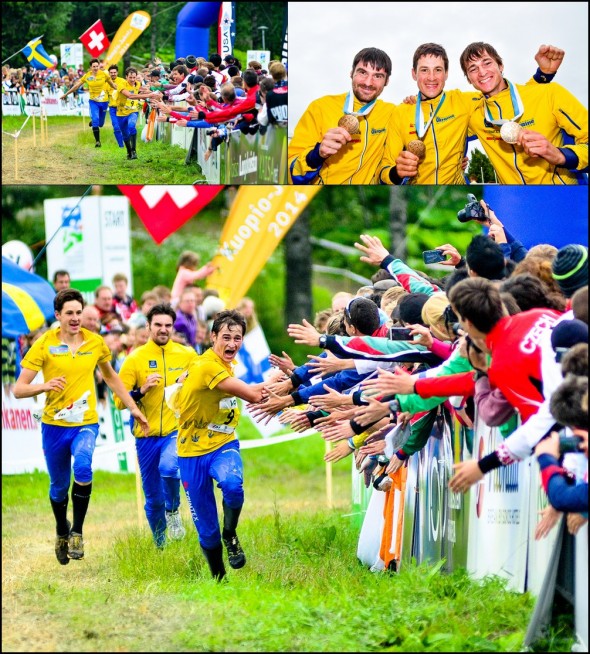
Possibility to re-introduce qualification in forest WOC
A split WOC may make room for re-introducing a qualification race in the forest WOC, e.g. for the middle distance. This is of interest because the current model with qualification through quotas instead of qualification races has very negative consequences with respect to athletes from smaller nations focusing less on forest races.
Background
Some background material:
- Original story at the IOF webpage: Orienteering.org: IOF President calls Extraordinary General Assembly during WOC in Scotland in August
- The IOF proposal is based on an original proposal by NORD in 2014 (the Nordic Federations), but with some modifications being done.
- The NORD proposal from 2014 was again based on a proposal for a Split WOC from the Swedish Orienteering Federation in 2011 – in this World of O article from 2011 the pro/cons of a split WOC model is discussed at length with reference to the situation at the table in 2014. At that point in time, nearly 80% of World of O’s readers wanted a split WOC model – but the reason for the high numbers was that the alternative was to remove the qualification races (which there was very strong opposition against) and to introduce the new (untested) discipline Mixed Sprint Relay, possibly replacing the traditional same-gender relay. Finally the Split WOC proposal was not introduced when the decision to change the WOC program was made in 2012 (see WOC history further down).
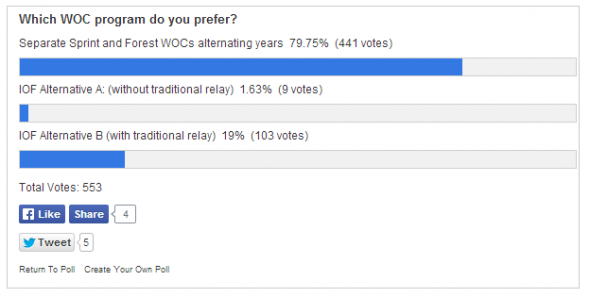
WOC Program from 1966 until today
There have been several changes in the WOC program since the start in 1966. From the start the championships was organized every second year with only long distance (without qualification) and a 4 runner relay, i.e. 2 races. Then the short distance + qualification (later changed to middle distance) was introduced in 1991, increasing to 4 races. The long qualification was added in 1993 (5 races) and the sprint format was added in 2001 (7 races).
In 2003 the biggest change so far occured; WOC went from being organized every second year to every year – at the same time the relay was cut to three runners (still 7 races) . In 2014 another big change occured, after heated discussions the qualifications for long and middle were removed and a (Mixed) Sprint Relay was introduced (6 races).
Disclaimer: The author of this article has been part of the group reviewing the IOF competition program.
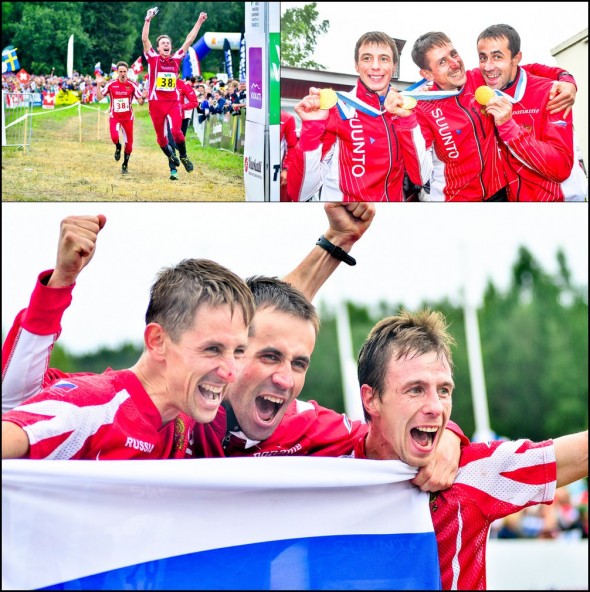
 World of O News
World of O News
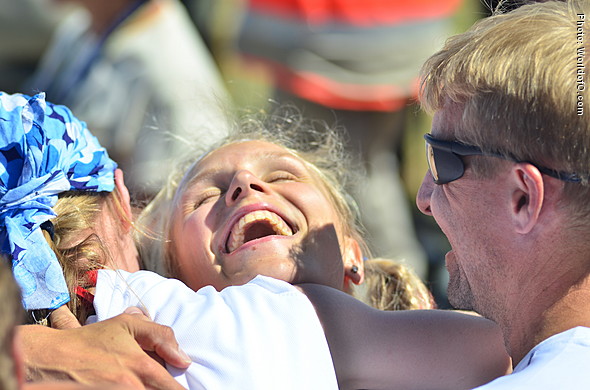
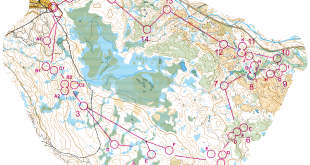
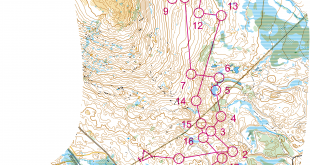
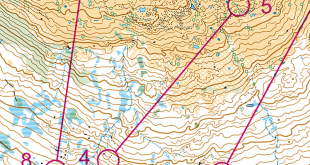
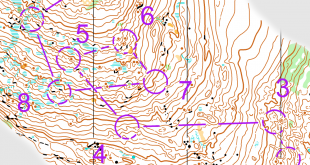
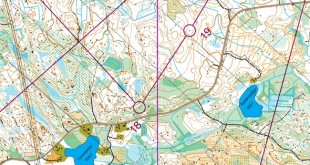
I won’t get too deeply involved in discussions given my Foot O Commission position, but a few comments (largely from an Australian perspective):
– cost savings to competing countries come not only from a shorter program, but from smaller teams – in particular it’s unlikely that any country would send more than 4 to an urban WOC.
– there are countries, especially outside Europe, who have no suitable terrain for a forest WOC, but would have excellent urban WOC areas (and potentially access to lots of money or in-kind support) – China is an obvious example here. Even in more developed orienteering countries, it’s not easy to find a mix of both urban and forest terrains – for example, in Australia, we don’t have a lot of places where we could find both 3 decent sprint terrains and good forest terrain in close proximity to each other, as the good forest terrain is mostly well outside the major cities, and most towns outside the major cities have at most one decent sprint area (the local university/college).
– we did some scoping a few years ago at what would be required for Australia to host a WOC under the current format. We concluded that we had the technical capacity to do it, but to make it viable financially would require probably something like 500,000 EUR in external money, either government or sponsorship. I imagine this would be similar in most countries – it’s a bit easier in Europe since there is more potential to get extra people to spectator races, but this isn’t a magic solution. (If you are making 50 EUR profit per participant in spectator races, 5000 people still only gives you 250,000 EUR).
Blair: imagine a city-tour sanctioned by IOF with great presige and a concept that is profitable.
The photos from the evnt would be so cool that all media would show and print them. (and the event would have an awesome name ;)
It’s not WOC, but its world wide and something like what the city-WOC could be. Would AUS organize it in Sidney?
Like the City Race Euro Tour: http://cityracetour.org/?
Except that is more a pure “spectator race” than focus on the elite – and I didn’t see the great pictures yet. From the webpage: “THINK HARD, RUN FAST, FEEL GOOD Orienteering Events in wonderful places of major European Cities, in front of enthusiastic spectators and with a touristic approach. From Under 10s to Over 70s, whether you are one of the world´s best orienteers, experienced athlete or it’s your first time in Orienteering… YOU ARE READY TO ENTER!”
Imagine if we give City-WOC to CRET and forest-WOC to O-Ringen AB? Their ideas has potential. Loving physics, potential is what we search for ;)
Thanks a lot for your input, Blair. As I read your comment, a split WOC would be both easier to organize for Australia – and lead to lower cost for the team/athletes.
Jan, you made a great quick comparison of different aspect but it is probably very hard to discuss what is best as there is no any real metrics or numbers of growth of orienteering and any real financial, media or organizational overall numbers to compare previous WOCs. It would be good to present also these data.
IOF Statistical reports are good source to understand how orienteering develops in each country. Maybe a report by regions (if not by countries) for the period from 2003-2014 to get a realistic data about the growth of orienteering. These numbers can tell a lot. Orienteers evaluate every split time, route choice so it would be good to have also accurate analysis of data and current status and interest for orienteering around the world.
For instance there are 79 IOF countries but at last 4 WOCs there were participants from cca. 42-51 participating countries. A data can tell how orienteering and participation in orienteering have grown in Britain from last WOC99 or let say how big influence World Games have had on interest for orienteering in first year after WG in Columbia?
WOC is a serious business project and some organizers are better than others and can make a business out of it and some just want to cover the WOC’s costs. I suppose IOF want to find a way to make a sustainable business model. If current WOC model is too expensive as Blair pointed out I suppose splits WOC is an alternative to lower the costs for organizers.
Agree – statistical reports should be available and transparent.
Btw, low profitability will not be turned into high profitability by splitting WOC. We will simply have 2 events with low profitability;) Same challenge when it come to recruiting organizers.
@Samo: You write “WOC is a serious business project and some organizers are better than others and can make a business out of it and some just want to cover the WOC’s costs. I suppose IOF want to find a way to make a sustainable business model. If current WOC model is too expensive as Blair pointed out I suppose splits WOC is an alternative to lower the costs for organizers.”
Yes, a sustainable business model is key here, and that is also the main point in my overall conclusion. And yes, I suppose split WOC is an alternative to lower the cost for organizers (and for teams). But as I write in my overall conclusion in the article:
Does a split WOC solve any of the real issues at hand? A split WOC may solve it better than today’s model, but is the step too small compared to the step necessary to be sustainable?
The answer on this last question may very well be yes, but I think it is important to see all the way to a substainable WOC.
Thanks Jan for a good summery of the different pros and cons.
To me the whole discusssion seems to have started in the wrong end. The main questions in my opinion is what do we want to achieve with the WOC? How do we best do that? What can we improve and what should be unchanged? Once we know what we want with the WOC the different aspects Jan has listed can be weighted and clearly not all of them will be equally important. E.g. if the (sole) purpose is to find the Worlds best runner on a given day, why should we care if small nations that have never gotten any of their runners past the qualification round show up or not? The IOF has stated that it wants runners to specialise in the different distances, so it doesn’t matter if runners can’t take part in all events.
So as I said we first need to determine what we want to achieve with the WOC and we are spending so much resources on this event.
In my opinion the main purpose of the WOC is the have the attention of mediaand thus the general public. Media attention will make it easier to find sponsors for fedrations, clubs and runners. Media attention will make it easier to find new runners, or for people to find orienteering. Media attention will make it easier to recruit and keep volunteers. Media attention is of course a prerequisite for inclusion in the Olympics (which is still an official goal of IOF).
To gain media attention we do like most other sports we organise a WOC (OK most other sports drop the O). We gather runners from all over the World to find the best runners in different variations of orienteering with different terrain and distances.
@Bernt: Yes, of course I agree that having clear knowledge of the goals for WOC is a prerequisite for the split WOC discussion. In the competition review project, the goals for WOC have (of course) been a topic which has been given a lot of attention. This article is, however, more than long enough as it is – and I did therefore not include the discussion on the goals of WOC here. But some quick words on it: Media attention is one of the main goals for WOC, yes. Even higher up, in my opinion, is to determine who is the best orienteer in the World. And economic sustainability (as a minimum) for WOC is also up there. Which goal is the most important depends on your viewpoint; in some ways it comes down to a hen-and-egg situation, on the other hand the relative importance of the goals dictates how you can compromise with respect to the program, the athletes, quality etc. Is media, money or fairness & the athletes the most important part here? But again, I didn’t want to take this discussion in this article, although it should maybe have been there…
“To me the whole discusssion seems to have started in the wrong end. The main questions in my opinion is what do we want to achieve with the WOC”.
I agree with BOM!
Imagine if we first agreed on the WHY’s of WOC (i.e. what do we want to achieve, what is the purpose of WOC, WHY does WOC exist) ?
Trying to achieve anything without shared goals is like running orienteering with a map without a course on it :(
Great organizations/leaders establish the WHY (we do what we do) and HOW (we should do what we do) of the organization/movement/event/product. After which it’s possible to enable anyone to create anything. First establishing WHY and HOW will remove randomness and align people.
Also: sponsors buy the WHY we do what we do, they don’t buy WHAT we do. (exercise: the sponsor will ask: “why should I give you my money?”. What do you answer?)
@Anders: But as I write above, the discussion hasn’t started in the wrong end. This article doesn’t include that part of the discussion (but it maybe should, based on these comments:-). I am sure this will be part of the discussion at the extraordinary General Assembly, though.
What the decision turn out to be is not so important. The process is. And the implementation is. And the success of the implementation is dependent on the first part of the discussion :)
I would like WOC to determine the best athletes of a great sport, and to help market the sport as healthy, useful (navigational skills, many people get lost in cities and everywhere else every day), challenging yet feasible for all and fun. Through web, web-TV, GPS-tracking etc our sport can be large and well-known enough to reach most potential participants, even without international TV-broadcasting and Olympic status.
I would like to organize urban-o and forest-o championships on alternating years.
In all disciplines, we must ensure that all nations can take part with at least three runners, development of elite-orienteering in middle-large nations today severely suffers from the lack of reasonable goals. For Belgian male juniors, the step from the six spots in all disciplines at JWOC to one or two spots at WOC competing with e.g. Yannick Michels, is simply discouraging and they quit and give up at 20 years!
Still, it is important that the best runners take part, too. I suggest four spots for the top nations with e.g.,, at least four runners in the red group, and three for everybody else. This requires forest qualification. Or may be not? The total number of runners will still be say (4*6+3*25+31)=130.
I suggest this a set-up of the forest WOC, (largely inspired from biathlon):
Day 1 (a Saturday): Middle individual start. 5/4 km-25 min, three start groups best ranked runners start last, drawn start among 30 last runners, then among the 50 next and then among the remaining 50. Start interval 1:45, a bit less than 2 min should be OK since the length is slightly shortened. The length is shortened to make sure the best runners can and want to run all disciplines. Total starting time ca 225 minutes. Medal event.
Day 2 (Sunday) Middle chase start, but 15 sec between runners after 20 minutes, estimated start time 30 minutes. Some controls forked so that runners run slightly different courses, but all alternatives equally difficult and less than 10 seconds difference in time for optimal execution. 7.5/6 km-Winning time 35 minutes. Medal event.
Day 3 (Monday) Rest day
Day 4 Qualification race, but 40 best runners in Middle events are pre-qualified and may skip this. 7.5/6 km – 35 minutes
Day 5 Long distance individual. 15/12 km –winning time 75 minutes. Medal event.
Day 6 Rest day
Day 7 Relay 5/4 km 22.5 min, 4 legs, total competition time 90 min. Medal event.
Day 8 Mass start; maximum 90 runners, a few prequalified before WOC, the rest qualified based on results from this year’s WOC 20/16 km running distance – winning time 95 minutes. Some controls forked so that runners run slightly different courses, but all alternatives equally difficult and less than 10 seconds difference in time for optimal execution. No forking in last part of race, but runners don’t know when forking is over. Medal event.
Urban WOC
Day 1 (Thursday)
Sprint individual part 1 – interval start 1 min interval, 130 participants based onsame principle as middle interval event in forest WOC. 3.5/3 km running distance 10-12 minutes winning time
Sprint individual part 2 – interval start reverse starting order based on first part results (like ski jumping or slalom and giant slalom in alpine skiing). Only best 30 runners from part 1 allowed to start, rest is placed according to part 1 result. 3.5/3 km running distance 10-12 minutes winning time. Runner with best total time becomes world champion.
Day 2 Rest day
Day 3 Mixed sprint relay (as today). Medal event.
Day 4 Urban mass start. 7.5/6 km running distance 26 minutes winning time. Some controls forked so that runners run slightly different courses, but all alternatives equally difficult and less than 3 seconds difference in time for optimal execution. No forking in last part of race, but runners don’t know when forking is over. Maximum 60 runners, a few prequalified before WOC, the rest qualified based on results from this year’s WOC. Medal event.
Length of forest WOC 8 days and five medal events, same as today’s combined WOC.
Length of Urban WOC 4 days, and three medal events.
I’m not necessarily against a splitted WOC. I’m not necessarily against mass start races either, but I think it’s a horrible idea to suggest unfair forking. There is no way to guarantee “equally forking” and it would be a disaster if unfair forking decides the medals. If we want a masstart race, then the forking must be fair, for example using the model of Blodslitet, with several forked loops first and then a unforked in the end. (Sidenote: If orienteering ever goes Olympic, this would be the best format in my opinion. Not a sprint and most difinitely not a sprint relay.)
I also think it’s a bad idea to add a lot of new diciplines. On of the reasons to split up is to make it easier(/cheaper) and therefore making tons of new distances will not solve that problem. My suggestion for a split WOC:
Urban:
Day 1 – Sprint Q (3 athletes per nation)
Day 2 – Sprint F (45 in final, as today)
Day 3 – Sprint Relay (as today)
If 3 races, 2 medal events are not enough: add a 60 minute mass start with fair forking.
Forest:
Day 1 – Mass start event (Blodslitet model, WT: ~75min) 3 athletes per nation)
Day 2 – Rest day
Day 3 – Middle distance (as today: WT, ~90 min, with todays system of qualification)
Day 4 – Relay (as today, 3 legs ~35-40 minutes)
Day 5 – Rest day
Day 6 – Long distance (as today: WT ~90 min, with todays system of qualification)
This way the masstart event will make sure all nations have 3 spots for at least one individual race and it will make it will give more runners from smaller countries a possibility to run in the forest at WOC and therefore also make sure as many teams as possible will have (atleast) 3 runners there so they can participate in the relay. If it’s okay to add one day I would’ve added a middle Q where all nations could have 3 runners. Then the programme would be: Masstart-rest day-Middle Q-Middle F-Rest day-Relay-Long. But then we’re back to 5 races in 7 days, which probably is too tough?
Currently the sport is controlled by the larger nations – those who can finance their runners to World Cups and gain high rankings in preparation for WOC.
We need to bring back qualifications for the forest. So we MUST split the diciplines. Most athletes would welcome the opportunity to really focus on a WOC every two years rather than be constantly planning where to get ranking points and where next year’s WOC is. Most athletes are also very adaptible and so you will see a large majority of athletes focussing on different disciplines over the two years.
In the end shouldn’t we be thinking about what’s best for the athletes and also how to encourage growth in the smaller nations?
Yes, in skiing a specialization is a very natural way of athlete’s development. Only a few all rounders. Also more top profiles is a good thing for orienteering.
Yes, qualifications at forest WOC should be back. From what I read there is a plan to have only one q race for long an middle, pre-qualified spots and 1 reserved spot for each country. A very bad model for everyone (athletes, organizer, TV). I would suggest to have separate q race (3 heats as before) only for middle with no reserved spots for final. For long I would rather see a two day competition. Maybe a mass start qualification race with time bonuses for best as in cycling and second day an individual race only for best 50 in reverse order. It would be tactical + individual race all together and harder as today long. Also it would be good for organizer and media to have forest woc longer as some people want it.
@Lard & Samo: I also think that the removal of the qualification has not been good for the development of the sport. There are different ways to re-introduce a qualification model, though, also if the WOC is not split. Personally, I would not let only the requirement for qualification races lead to a decision for a split WOC, without considering the other implications.
The Qualification was removed last year. How can you see a bad developement already after one year? There was a long discussion to remove the qual and i think we should evaluate the impact after some years. Or are there already now runners from small nations they stopped their carear?
@Pascal: I have discussed with many athletes from nations with only one or two places in the long/middle for whom this is a serious issue, but I have no accurate information about how many (or if any) have taken the step to end their career (or switch to urban focus). All I know is that several I talked to have considered this seriously. For athletes from Switzerland and the other big nations with 3 spots the removal of Qual is of course only positive. And yes, it would be a good idea to send a questionnaire to the top athletes to ask how/if this influences their decision to continue their career.
Also, in feedback from the federations there was a request from several nations to reintroduce qualification races – I can’t give more details about that here, unfortunately.
With regards to split WOC and qualification, that is a simple question to answer – and this is why the qualification question comes up at this crossroad. You can simply not split the WOC without introducing some kind of qualification race for the forest disciplines. If you introduce a split WOC without introducing qualification, most nations will have only 1 or 2 slots/runners in the individual races; you can not expect them to send a 3-athlete relay team where in many cases 2 of the runners will only run the relay. Thus you need at least one qualification race to make sure there is an incentive for the smaller teams to send enough runners to have a relay team.
But: As I write above, I would not let only the requirement for qualification races lead to a decision for a split WOC. The reason I write this is that I know that many want qualification races reintroduced, and they see a split WOC as a solution for this. But I would not let that be the main basis for a decision to split the WOC or not.
Jan, is it possible to present the forest WOC qualification models pros/cons which your group think that could be used in case split WOC go through. I think the decision of introduction of one qualification model with all implications should be part at least at the next GA in 2016.
Sorry, I can not share any material or outcome of discussions from the review group. The content in this article is my input to the group’s work, and thus it was OK to write an objective article about the questions at hand.
OK. I understand your position as a member of IOF work group to follow the rules. But I don’t understand your position as a web media. There are no media in the world or in Scandinavia which is interested to report and analyze the IOF proposal in depth beside WorldofO. This is good, but it is not good that you as a media representative aren’t interested to report about topics which are in interest of WorldofO readers. Normally media or journalist present and write an article based on information they have got and if they don’t have it, they try to get answers from the IOF Office or IOF representatives. An objective report about IOF work.
If we really want to become a sport with more media attention, the people within IOF need to get used to explain also the sensitive information.
I don’t understand why more info about different qualification models should be a secret. This is the key issue for many countries and need to be communicated to public. No need to present pros and cons for each one if you don’t like to do it but presenting different models that you have analyzed and which ones are preferred by IOF should be done. It is OK that working group did the main work but from this phase on your work group representative need to ask IOF to start an open debate about qualification models.
At least at Ex GA representatives should adopt the decision who is entitled to make a final decision about forest WOC qualification model. It can’t be just a Council decision but must be a decision of next GA.
@Samo: I had to do a choice when I was asked to be part of the review group, and it was a difficult choice because I knew that it would, to some extent, reduce my possibility to write about these matters as a journalist. I still decided to join the group as I thought I would be able to contribute better for the future of the sport in the group than by just writing about it as a journalist (and after the work done there, I think this was a good decision). And I don’t think it has significantly influenced what is written here; I would not have had more information (or got more information) if I had not been in the review group, after all.
That said, although the question about qualification models may become a question with some importance, I think there are other questions (which I have raised in the article above, and also of course the questions BOM raises in his comments) which are much more important. From my perspective, the key question regarding qualifications is if there is a qualification or not.
However, as you ask, here are some thoughts about possible qualification models. There are two obvious overall possibilities (as long as one decides that one can not have a full start field):
1. Qual race only for middle, quotas or other system for long.
2. Qual race for middle and long. (Note the obvious disadvantage that one might get too many races again..)
The Qual race(s) can basically be either:
1. Some athletes are pre-qualified, the remaining run the qualification race. Advantages: Top athletes run less races and are more likely to run all disciplines. Smaller start field means less complex to organize. Determining pre-qualified runners can be based on World Ranking, quotas or other system.
2.Of the type used in WOC up to 2013 (all athletes have to run Qual). Advantages: Top athletes do not get unfair advantage (extra rest) compared to other athletes. All athletes get same possibility to get to the final; more fair towards weaker athletes.
I’m just afraid that if we split the WOC IOF will soon start adding more disciplines to both WOCs and then in several years we’ll be in same situation than now. And I absolutely don’t want to see mass starts or chase starts in forest WOC or knock-out sprint in sprint WOC, because those disciplines are not real orienteering. In orienteering the best ORIENTEER should win, not the best runner or follower. And there is not such a good forking available for individual races that races would be fair.
Secondly, I can’t see any cost reduces because the biggest cost is travelling and shortening the WOC by 2-3 days would not lead to significant saving. And from European point of view, possiblity that soon we could have every second year WOC in e.g Asia or America would absolutely not save any money. And how could these tiny orienteering nations have TV or high quality arrangement? We saw what happened in Portugal at last year’s EOC and I don’t think that without a sprint race organization would have succeeded any better.
I’d prefer developing today’s WOC in the way those top orienteers suggested in their open letter. The qualifications should be brought back. All quals could be held before finals like in EOC 2012 and then finals with rest day or two in between. Spectators can arrive just before finals to have a one week’s holiday.
And Jan, where did you get those numbers for cost etc reductions? Are they based on facts or just intuition?
To my mind, soon or later we will have splited WOCs. Media and financial reasons will force that. Personally I don’t like urban O, but have to admit that WOC in New York or Beijing can do for the O the same as (at elast) 10 WOCs in the magic scandinavian forests.
Many people seem to take it for granted that a WOC in a large city would be good for publicity. On the other hand, I remember reading somewhere that the decision to hold WOC 2007 in Kiev was criticized, because a WOC in a big city would be lost among many other events (and that it ended up largely being the case), whereas a WOC in a smaller town could have generated a lot of local publicity and be better for orienteering in Ukraine in the end. Also, it’s not accidental that Orienteering Ottawa decided to organize the NAOC 2014 sprint in a small town of Arnprior instead of Ottawa – I think it was largely for the same reason.
It is probably possible to generate a lot of publicity for an event in a big city, but it will not come automatically. You do a large orienteering event in New York, it’s seen by a few hundred locals and tourists and gets written about on page 100 in New York Times, so what? Anything more than this would still require a lot of expensive PR that the IOF does not have the money for.
Before WOC 2010 the Norwegian Federation was quite clear that a WOC in Oslo would drown compared to all the other things happening. And to be fair by international standards Oslo is not a very big city, while orienteering is a fairly big sport in Norway compared to some of the cities/countries mentuioned by MChub.
The city needs to be large enough to have the necessary hotel capacity and so on, but should be small enough so orienteers can colour it red and white.
In the end shouldn’t we be thinking about what’s best for the athletes and also how to encourage growth in the smaller nations?
Like Bernt said above, unless we address this sort of question of what WOC is for, any argument about how to do it is pointless.
“Best for the athletes” – but which athletes? Removing qualifiers makes it more likely that the very best runners will be there in all the races. It’s not “best for the athletes” to make them run five tough races in a week: but its not best for a “World Championship” to have the top runners sitting out. Currently, the top runner from each country gets to run the WOC final: bring back qualifiers and most countries will have no representation in the televised bit. Qualifiers are good for a very small number of people, i.e. the 2nd to 6th best in smaller countries – is that really who WOC should be about? Although its not polite to say it in form of their teammates, the very best athletes in small countries, whose federation may want them to run everything, benefit from not having to qualify.
Maybe there should be some hybrid qualifying system, where people who genuinely have a chance at being World Champion can prequalify. After all, we already know who will be in the televised “red-group”.
@Graeme:
(1) If the second best Spanish or Portuguese athlete gives up his career because he sees no chance to run WOC, will that encourage growth in the smaller nations? Did you talk to the representatives/coaches from the smaller nations?
(2) A split WOC would make it less tough to have qual races and still not have a too tough program for the best.
(3) One qual race instead of two (e.g. only qualification for middle) would be a possibility
(4) A “hybrid qualification system” as you call it is what is in the suggestion which is on the table now (I am not sure this is a good thing, though)
So, if the second best athlete gives up his career, it’s bad, but if the third best does it, it’s OK? Or is it also bad? But you have to draw the line somewhere!
I think it’s fair to say that the competition for WOC spots (no matter what the system is) is typically much higher in the bigger nations than in the smaller ones. There are tens of thousands of orienteers in Nordic countries, 99% of whom have no chance to ever be in the WOC, yet somehow they do not lose the motivation to do orienteering.
On the other hand, more WOC spots does not equal more interest to compete. Ukraine’s men are in top 8 this year and so have 3 WOC spots, but AFAIK, there are only 5-6 male athletes in Ukraine serious about competing at the international level.
@MChub: Sure, but in order to become a (more) global sport, the second best Spanish and Portuguese runners are more important than the 20th best Norwegian or Swedish – even if the Norwegian & Swede are better orienteers. And if the second best Spanish & Portuguese runner quit, then there is a new second best coming up, and …
Anyway, the qualifications is only one aspect of the split WOC issue, and not the most important one. But it is one that it is easy to discuss and have an opinion about… As I write elsewhere here in the comments, from my point of view it is important that the qualification issue is not the issue which decides if the WOC should be split or not. That can be handled also if it is decided not to split the WOC, and then one can do a proper evaluation first, as Pascal also suggests in his comment.
Finally, You’ve got the right questions! Changes for WHOM? Obvious- not for runners, because of double costs for doubled travelling and training camps expenses…
My 5 cents:
1) To go evolutionary not revolutionary way- to split both parts in just time but not in place.
Start with full “urban” orienteering program, then rest day and continue with full “forest” orienteering program at the same region. Then we will see the real figures of applicants and participants here and there for further suggestions. Then it will be possible also for “overspecialized” runners to apply just for half of WOC.
2) Of course, to get back some sort of qualifications for “forest” disciplines with the possibility also for qualified runners from “exotic” countries to gain some rating points (in many cases small federations (in Asia, for instance) have allocated some limited resources for WOC, nothing else).
To make easier life for elite runners, probably, 20-30 places could be predefined without qualifications but 30-40 have to be allocated through the qualifications.
3) TV coverage. I have experience from this field. There is completely wrong opinion that elite runners can attract more TV’s. This is unimportant. The important is only one thing- how much advertisers are ready to pay for advertisements during these broadcasts. And for TV’s it does not matter- orienteers, horses or hippopotamus are competing. But to attract BIG companies through the BIG partnership agreements- this is job still undone by IOF officials. And now, instead of doing things in the right order we are trying to innovate something meaningless to prove that we, IOF officials are still active and urgently needed for the whole orienteering society…
Sorry for saying this. Nothing personal!
@Proposals:
3) TV coverage: [….] and now, instead of doing things in the right order we are trying to innovate something meaningless to prove that we, IOF officials are still active and urgently needed for the whole orienteering society
As I see it, the discussion about splitting WOC is more about cost reduction for all parties (also a cost reduction with respect to TV) than about “innovate something”. I think most would want a full WOC if it was sustainable, i.e. if organizers could earn money by organizing WOC and there was money available to pay for the athletes coming to the races instead of the opposite.
The TV coverage discussion is of course related, but still another discussion?
“As I see it, the discussion about splitting WOC is more about cost reduction”
Maybe one of the big topics should be about how we can increase reveues.
Cutting cost _sounds_ nice, but it is a one-way-ticket to zero cost.
Imagine what that would be like!
Increasing revenues is very different from reducing costs. The former is more difficult that the latter. I sent a suggestion to Tom Hollowell some weeks ago. Don’t know if he has considered it (or maybe is doing it already:)
@Anders: Splitting WOC is about cost reduction – I am sure Tom Hollowell and the rest of the IOF also works hard on increasing the revenues. And if splitting the WOC means reduced opportunities for increase revenues, that’s something that must be taken into account…
I think that it is necessary to carry out the WOC without qualification to make it cheaper.
Good approximately biatlon- there is no qualification. And we need to tv was nice and good for understanding for peoples who watches TV like in the biathlon.
As for the order of starting, you can just make two groups of elite athletes. in the first run as the most powerful like Thierry Georgiou and the second group has the paths that are weaker as a rank
Hmm, interesting idea- race without qualifications, with a possibility to choose starting group as in biathlon. Ok, according to national quotas there could be 150-180 runners in total, it is hardly manageble with 2-3 minutes starting interval, but it is still possible. Of course, there are different options.
What if you became a World Champion and notbody noticed? It the only point is finding the best orienteer in the World¨the whole event could be very low key. Invite 15-20 runners to a little event on a good map in an interesting terrain.
However, in my opinion there are many other (and maybe more important) things we want to achieve, more or less in the order of my priorities.
1) Improve the visibility of orienteering; and thus attracting sponsors and more participants.
2) Give ranking points to weaker nations. It has often been pointed out that for runners outside Europe it is difficult to get ranking points. Their local events have few runners with high score, thus winning the event also gives you a relatively low score. I think this point is important to make orienteering an even more international sport.
3) Give many runners a goal to aim for. Obviously many participants in WOC have no realistic hope of winning, but making your national team is another goal. This will also show more runners where the international level is.
4) Spread organising competence.
Given these priorities I will say that it is important to get participants from all over the world (point 1,2&3). There should preferably be more than one runner from each nation as we also want plenty of relay teams (and fulfill point 2&3). The best runners at each distance should be present (point 1), but I don’t agree that there some “best runner” that need to run all distances.
Given that we want media friendlyness and many participants from many nations. My conclusions are that there should be some sort of qualification. I’ll say 20 directly qualified and 40 through races just before the finals. These qualification races should give WRE points. I think these qualification races (together with the finals of course) will fulfill points 2&3. It should also give the incitament to send enough runners to form relay teams (point 1). With the re-introduction of qualification races the WOC should be split in two to keep the total duration down. Splitting the WOC also makes it easier to find organisers (as pointed out by others it can be difficult to find places that are good for both forest and urtban orienteering). With separate forest and urban WOCs they should be held on alternate years to keep the travelling costs down (particularly important for many of the weaker nations where the runners pay their own expences).
To those that are afraid of changes without testing first. Forest WOC every second year was tested over 40 years and worked well (although a glimpse on TV every second year was too little).